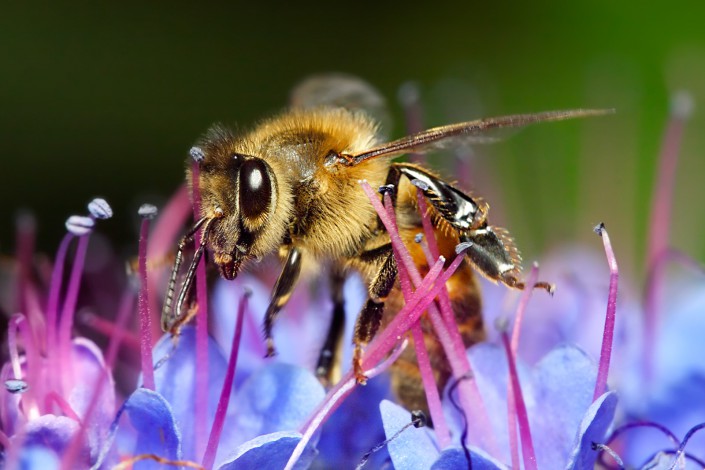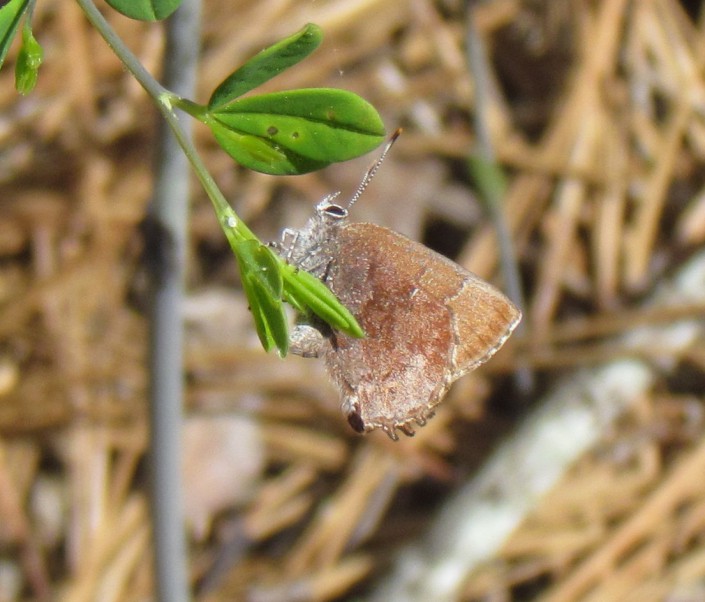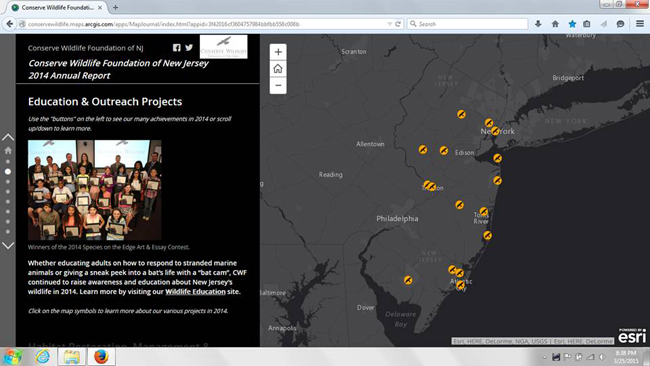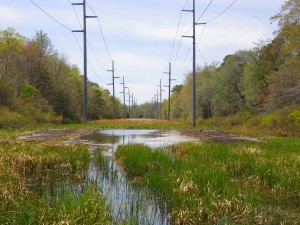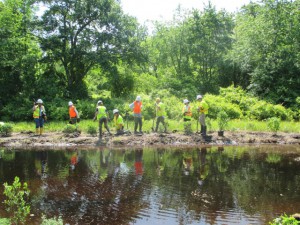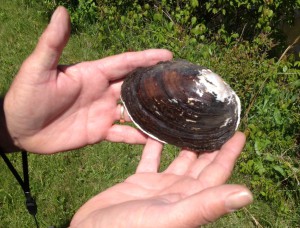From Birds to Butterflies
Why Should We Care About Endangered Species?
by Lindsey Brendel, Technician
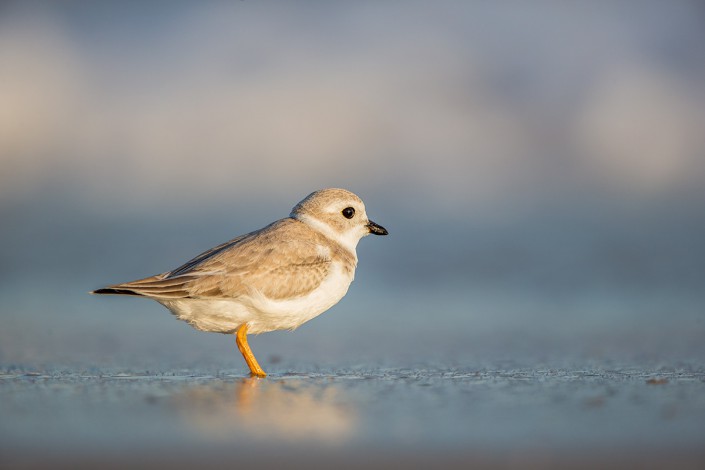
As summer melds into early autumn, migration comes underway. The nesting season for beach nesting birds is drawing to a close, and shorebirds can be seen feasting along the beaches as they fuel their bodies for their journey south. This was my first season working with endangered beach nesting birds. Watching territory disputes and courtship displays early in the spring transitioned into nest searching and anxiously awaiting the hatch dates of our incubating pairs.
I feel an incredible sense of pride in the birds that have survived to fledge. It is impossible not to become attached when you spend weeks closely watching tiny chicks who take a tumble, are then brooded under their parents’ bodies, and finally mature into independent, fully feathered young birds, preparing for their first migration.
The start of fall migration also marks the reason I originally came to New Jersey one year ago, that being to study the monarch butterflies’ southward migration along the Atlantic coast. Last year was my first season as a field technician with the NJAS Monarch Monitoring Project, a research and education program that performs daily censuses of migrating monarchs, public tagging demos, and educational outreach. The project runs from September 1 through the end of October, and I will be back and working with the team again this fall.
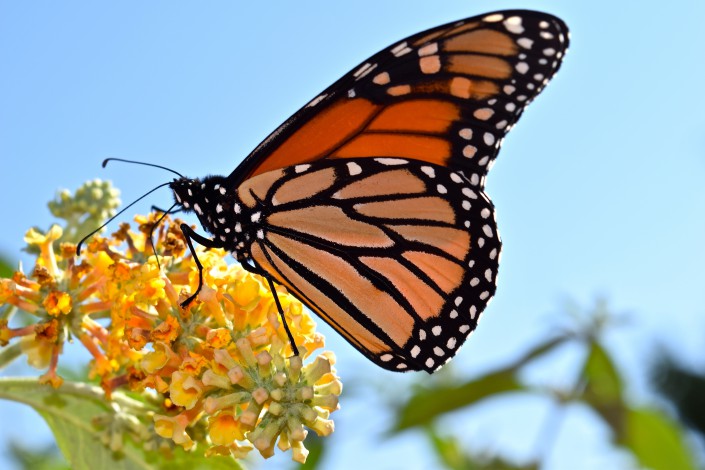
For me, I see the monarch butterfly as the perfect gateway animal into the larger world of conservation. Their widespread range in North America, and easy recognition means that many people are already familiar with this royal insect. Many school age children have learned about their life cycle in school, and may have even raised caterpillars and been witnesses to metamorphosis. Even if you have never learned about monarchs, their bright and bold appearance, sporting the warning coloration of orange and black, make them hard to miss.
That is one of the big differences I see between the beach nesting birds I have grown to love this summer and monarch butterfly. Cryptic and camouflaged are words that describe our beach nesters, specifically the endangered piping plover, who, when standing still, blends in perfectly with the sandy beach landscape. When I talk to people who have gone inside the fenced areas we have on the beaches for the nesting birds, a common response that serves as their rebuttal is that they “didn’t see” any birds, so they thought it would be okay. Situations like this happen frequently, and I have found that teaching, rather than scolding, is a better use of time. I love being able to show people the birds and highlight the fenced off areas as a family zone for our feathered friends; removing any mystery as to why these spaces are off limits.
Coming from a background in the arts, outreach is the arena I feel best suited for. I have had the pleasure of leading the beach nesting bird walks at Cape May Point State Park this summer. I love being able to share with others the life of a beach nesting bird, emphasizing that it really is a family affair, and a difficult one at that. The State Park will serve as a major hub for my work this fall, as that is where the Monarch Monitoring Project holds its butterfly tagging demos, and where we teach the public about the 2500-mile migratory journey the monarch butterfly undertakes to reach its wintering grounds in the mountains of Mexico.
The beach nesting birds I have worked with this summer are endangered. Currently, the monarch butterfly is also under consideration to be listed as an endangered species. One question that comes up at both the bird walks and the butterfly tagging demos is, “Why would it matter if this species was gone?”
Sometimes it is asked with genuine curiosity, and other times it is said as a jab. Either way, it is a difficult question for me to answer, and I have to evaluate why I care. I think and worry a lot about the loss of milkweed, lack of nectar sources, and loss of wintering habitat for the monarchs all the time. After working with beach nesting birds, I will never be able to enjoy a summer thunderstorm the same way again because I will always be picturing a tiny least tern or plover hunkered down on their nest trying to protect their eggs through the wind and the rain.
We protect things of value, but what value do these birds or this butterfly have? Why should we care about endangered species? One argument often made about rainforest deforestation is that there are possible undiscovered medicinal properties that could be cures for diseases. It is unlikely that piping plovers or monarch butterflies hold untapped medical value. So, why should we worry about their declining numbers?
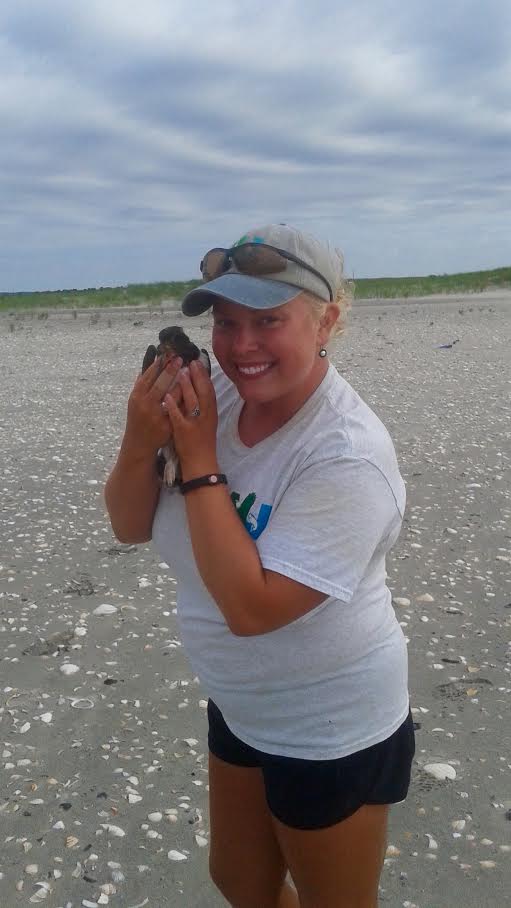
For me, my fear is less about losing individual species, and more about the dangers of a widespread ideology where everything is treated as a commodity. I see this as the reason these two species have been pushed to dangerously low numbers and one of the hardest challenges conservation efforts have to face. We live in a very “me centered” culture, and conservation asks us to acknowledge our place as just one of the many functioning pieces in the world around us. If we are going to be on the beach with our family, we need to understand that the least tern flying with a fish in its mouth is bringing food back for his family on that same beach. If we are going to invest in monoculture farms that heavily rely on herbicide use for our food, then we need to realize that we are taking away the food source for monarchs, and many other insect species.
Do I think compromise between humans and critical habitat for endangered species can be achieved? Absolutely. Indeed, one of my favorite parts about working with endangered species is letting go of my role as Supreme Being, and acknowledging that an insect or bird is doing something that I never could. When a monarch butterfly emerges in the fall, regardless of the fact that it has never taken a long flight before, it starts off on more than a 2,000 mile journey to a place it has never been, but knows instinctively to navigate to. When an intruder gets too close to a plover’s nest, the adult will flop around pretending to have a broken wing, making himself look like the vulnerable and easy target, all in an effort to protect its eggs. Some of the best examples of determination and selflessness are happening right around us in the natural word, and we all have the invitation to expand, and learn, and watch it take place. That is the marvel. That is the mystery. That is where I feel the real value of protecting endangered species comes from.
Learn more:
- Conserve Wildlife Foundation’s Beach Nesting Bird Project
- Fight for the Flight: Monarch Butterfly Status Under Review
Lindsey Brendel is a Technician with the New Jersey Division of Fish and Wildlife, who worked with Todd Pover on our Beach Nesting Bird Project.
